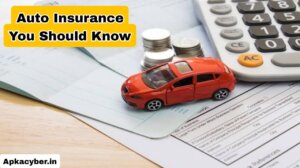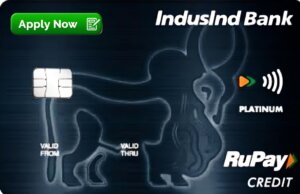
Auto insurance is an essential aspect of responsible vehicle ownership. Whether you’re buying your first policy, switching providers, or simply trying to understand your current coverage, it’s crucial to familiarize yourself with the language of auto insurance. The terms used in your policy can seem complicated at first, but with a little guidance, they become much easier to understand.
In this guide, we’ll break down the most important auto insurance terms you need to know. We’ll keep the definitions clear and practical so you can feel confident when reviewing or purchasing your policy.
1. Premium
Your premium is the amount you pay for your auto insurance policy. It can be paid monthly, quarterly, semi-annually, or annually depending on your insurer. This is essentially the cost of having insurance coverage.
The price of your premium is influenced by many factors, including your age, driving history, location, type of vehicle, and the amount of coverage you choose. Safer drivers or those with a clean record may qualify for lower premiums, while high-risk drivers may pay more.
2. Deductible
A deductible is the amount you’re required to pay out-of-pocket before your insurance company starts covering costs for a claim. For example, if you have a $500 deductible and your repair costs total $2,000, you pay $500 and the insurer pays the remaining $1,500.
Higher deductibles typically result in lower premiums, and vice versa. It’s important to choose a deductible you can afford in case of an accident.
3. Liability Coverage
Liability insurance is required by law in most states. It covers the costs if you’re found responsible for an accident that causes injury to another person or damage to someone else’s property.
Liability coverage usually includes two components:
-
Bodily Injury Liability (BIL): Covers medical costs, lost wages, and legal fees for the other party if they’re injured.
-
Property Damage Liability (PDL): Pays for repairs to the other person’s vehicle or property that you damaged.
This type of coverage does not pay for your own injuries or vehicle repairs.
4. Collision Coverage
Collision insurance helps cover the cost of repairing or replacing your car if it’s damaged in an accident, regardless of who is at fault. Whether you collide with another car, a tree, or even a pothole, this coverage kicks in (after you pay your deductible).
It’s especially useful if your car is newer or financed, and it’s often required by lenders or leasing companies.
5. Comprehensive Coverage
Comprehensive insurance covers damage to your vehicle caused by events other than collisions. This includes:
-
Theft
-
Vandalism
-
Fire
-
Natural disasters (hail, floods, etc.)
-
Falling objects (like tree branches)
-
Animal collisions
Like collision insurance, you’ll pay a deductible before your insurer covers the rest.
6. Uninsured/Underinsured Motorist Coverage
If you’re in an accident caused by someone who doesn’t have insurance or doesn’t have enough coverage to pay for the damage, uninsured/underinsured motorist coverage protects you.
There are two key types:
-
Uninsured Motorist Bodily Injury (UMBI): Covers medical expenses and lost wages if an uninsured driver injures you.
-
Uninsured Motorist Property Damage (UMPD): Pays for damage to your car or property.
7. Medical Payments (MedPay)
Medical Payments coverage, also called MedPay, helps pay for medical expenses for you and your passengers after a car accident, regardless of fault. It can cover:
-
Doctor visits
-
Hospital stays
-
Surgeries
-
Ambulance fees
This is optional in many states but can be a useful addition if your health insurance has high deductibles or limited accident coverage.
8. Personal Injury Protection (PIP)
PIP is similar to MedPay but more comprehensive. It not only covers medical costs but may also pay for:
-
Lost income due to injury
-
Funeral costs
-
Childcare if you’re unable to care for dependents due to injuries
PIP is mandatory in “no-fault” states where drivers use their own insurance first, regardless of who caused the accident.
9. Gap Insurance
If you’re leasing or financing a car, gap insurance (Guaranteed Asset Protection) can be essential. If your car is totaled in an accident, your insurer will only pay the actual cash value (ACV) — not what you owe on your loan or lease. Gap insurance pays the difference.
Example: You owe $18,000 on your car loan, but its ACV is only $15,000 when it’s totaled. Gap insurance covers the $3,000 difference.
10. Actual Cash Value (ACV)
The Actual Cash Value is the market value of your car at the time of a loss. This is what your insurer will typically pay out if your car is totaled, minus your deductible.
Keep in mind that ACV factors in depreciation — so a vehicle that cost $30,000 new may only be worth $15,000 a few years later.
11. Replacement Cost
Unlike ACV, replacement cost refers to the amount it would take to replace your car with a new one of similar make and model. Some insurers offer new car replacement coverage, but it usually only applies to newer vehicles (under a certain age or mileage).
12. Declarations Page
The declarations page (or “dec page”) is the first page of your policy. It outlines the essential details of your coverage, such as:
-
Your policy number
-
Effective and expiration dates
-
Covered vehicles
-
Types and limits of coverage
-
Named insured(s)
Reviewing this page helps ensure your policy matches your needs.
13. Policy Term
The policy term is the duration for which your insurance coverage is active. Common terms are six months or one year. You can renew your policy at the end of each term, and your rates may adjust based on changes to your driving history or claims.
14. Exclusion
An exclusion is a situation or person not covered by your insurance policy. For example, if your policy excludes coverage for racing or off-road driving, your insurer won’t pay for any damages if you’re involved in such incidents.
Reading the exclusions section carefully ensures you understand what isn’t covered.
15. Endorsement (Rider)
An endorsement or rider is an addition or change to your insurance policy that alters its terms. It can add, remove, or modify coverage. Examples include:
-
Adding roadside assistance
-
Increasing liability limits
-
Adding a new driver or vehicle
Always request documentation when making changes to your policy.
16. Claim
A claim is a formal request you submit to your insurance company asking for payment based on your coverage. For example, if you’re in an accident or your car is vandalized, you would file a claim to receive compensation.
Claims can affect your premium, especially if you’re found at fault.
17. Total Loss
A total loss occurs when the cost to repair your vehicle exceeds its ACV or a certain percentage of it (usually around 70–75%). In that case, your insurer may decide to declare the vehicle a total loss and pay out its value rather than repairing it.
18. No-Fault Insurance
In no-fault insurance states, each driver’s insurance covers their own injuries and damages, regardless of who caused the accident. This system is designed to reduce the number of lawsuits and speed up claim payments.
PIP is usually a part of no-fault systems.
19. Underwriting
Underwriting is the process your insurer uses to evaluate your risk and determine your premium. Factors include:
-
Driving history
-
Age and gender
-
Location
-
Type of vehicle
-
Credit score (in some states)
The goal is to assess how likely you are to file a claim.
20. SR-22
An SR-22 is not insurance itself, but a form your insurer files with your state to prove you carry the minimum required liability insurance. It’s usually required after:
-
A DUI or DWI
-
A serious accident
-
Driving without insurance
-
Too many traffic violations
Not all insurance companies offer SR-22 filings, and those that do may charge higher premiums.
21. Multi-Car Discount
If you insure more than one vehicle on the same policy, you may qualify for a multi-car discount. Insurers offer this incentive to encourage bundling multiple vehicles, which can reduce administrative costs for them.
22. Bundling Discount
Bundling means purchasing more than one type of insurance policy (e.g., auto and home) from the same company. Many insurers offer significant discounts for bundled policies, making this an effective way to save money.
23. Roadside Assistance
Roadside assistance is an optional add-on that provides help when your car breaks down. Services typically include:
-
Towing
-
Battery jump-starts
-
Flat tire changes
-
Lockout assistance
-
Fuel delivery
It’s a small expense that can provide major peace of mind.

24. Rental Reimbursement Coverage
If your car is in the shop for repairs due to a covered claim, rental reimbursement coverage pays for a rental car. This doesn’t cover routine maintenance or mechanical breakdowns — only events covered by your policy.
25. Telematics
Telematics involves tracking your driving habits using a device or app provided by your insurer. It monitors things like:
-
Speed
-
Braking
-
Mileage
-
Time of day
Safe drivers can earn significant discounts based on their performance.

Final Thoughts
Understanding your auto insurance policy doesn’t have to be overwhelming. By becoming familiar with the terms listed in this guide, you’ll be better equipped to make informed decisions, compare policies, and ensure you’re getting the right coverage for your needs.
Always take the time to review your policy documents, ask questions, and shop around to get the best value. Auto insurance is more than just a legal requirement — it’s financial protection that can save you thousands of dollars and a lot of stress when the unexpected happens.
